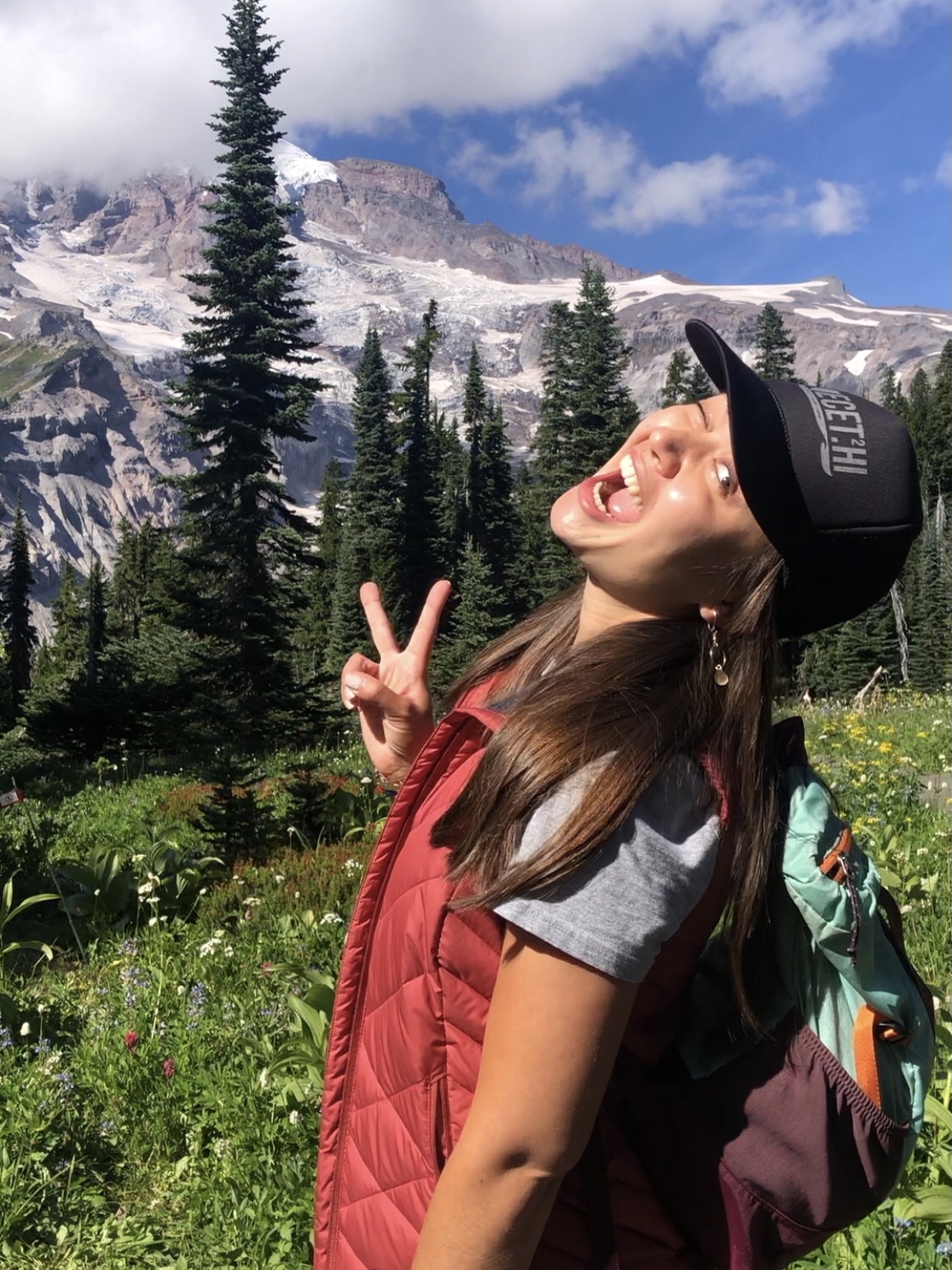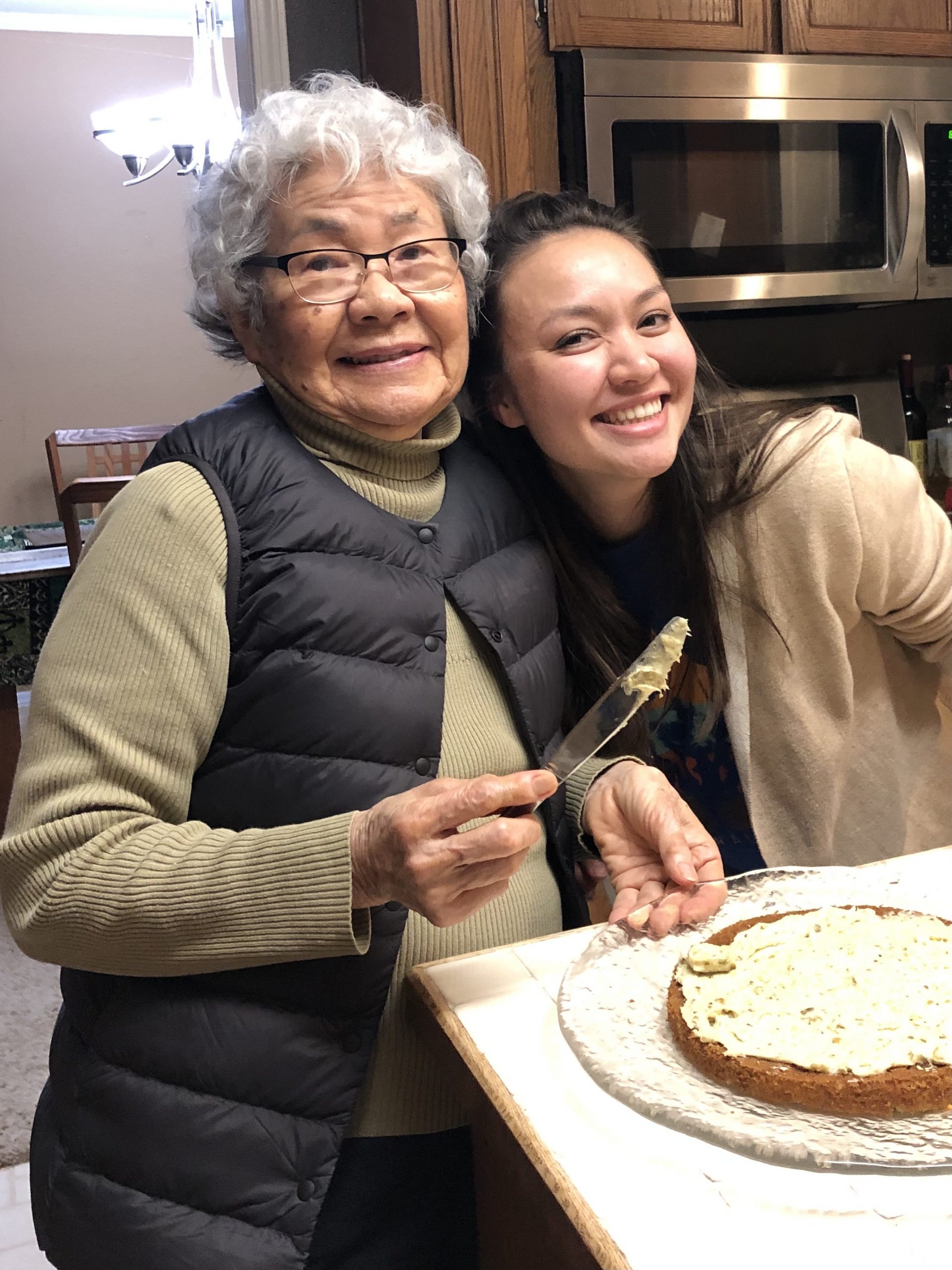Learning in the Making: Live! invites guest hosts of color on as equal and valued partners and collaborators, so that they can tell their stories and showcase the amazing things they are making and doing! This is because youth of color deserve to see engineers, scientists, mathematicians, artists, creators, and makers of color! In this series, we interview our guest hosts to learn a little bit more about them.
Maker Ed chats with Annalise Klein, guest host on Learning in the Making: Natural Paints. Check out the video to see Annalise in action!
What’s something about yourself that you think is important for others to know?

My name is Annalise and I identify a lot as being a teacher. I am mostly a science teacher. I’ve taught chemistry, I’ve taught geography, and I’ve taught earth and space science. I am a scientist but I think it is important for people to know I am also an artist. I love the humanities and storytelling. In college, I studied both! I majored in chemistry and creative writing and I think that both of them go hand in hand.
I love learning about the natural world. I love the order and the patterns we can tease out of it and that we can work with the natural world to make new things and explore new things. I also think it is really important to humanize that. How do we talk about the communities in which we are practicing science? How do we make sure that everybody feels like they can be scientists? Or that they know they come from cultures that have historically been scientists, their ancestors were scientists, their ancestors used technology? That we’re not just defining things based on one dominant culture’s experience? That’s what I love and how I try to find meaning in all of my work. How are we thinking about science? What are the stories that are going into forming what science is and then also what’s coming out of the scientific work that we do?
I’m not teaching right now. I’m working with science teachers and working with principals at a couple different schools, in communities that are very diverse or that come from very contextualized places, to help make sure that our science curriculum and the way that we teach in those places are culturally relevant and empowering to students.
What excites you most about your work?
What excites me is that I enjoy helping people see that scientists and artists are more similar than they are different. In college, I did a lot with a scanning electron microscope; it shoots this beam of electrons down and then it rubs over the surface of an object so you can get like a topographical map of something that is really, really small. And then I also looked at poetry and poets and how poets see the world. There’s this connection between careful observation and changing your perspective, either by zooming really close in and listening to a certain experience or looking at something on a nano level can really change your perspective and it always makes things more beautiful. You get to see the beauty in everyday objects. That’s what excites me and I enjoy helping people make that connection as well as learn from people about what that means, what artistry means and science. Especially as I work in different cultures that are not my own. Right now I’m working in a village in Alaska. I’ve worked with students in Hawaii and people are always teaching me and welcoming me in and showing me how their culture also bridges those two qualitative and quantitative worlds. That’s what excites me! There’s so much out there to learn and so many connections to make.

Why do you make?
I was thinking about why I make things and it really goes back to my own family. I come from a family that for generations has made things. In my family we didn’t buy a ton of stuff and when something broke we fixed it. That taught me saving money and frugality, definitely, but it also gave this no excuse attitude, like “you can fix things. We are not going to buy into this story that if something is not perfect anymore I have to replace it just because I can because it is available to me because I have the funds to do so.”
My grandma grew up during World War II and really had to sacrifice because of that, that has been ingrained into her generation and that is the way she operates. Things were always fixed with glue and duct tape and rubber bands. She would take address labels you get in the mail sometimes and cut off the little picture on the left side so we would have stickers to play with and then she would use the address strips as tape. We would have board game boxes that were cracking and she would go around and tape all these little address labels to it. It kind of became artistic, too.
[My grandma] practices Oshibana, which is a Japanese art with pressing flowers. We would always go on walks and she was always collecting a leaf that she found with a beautiful shape or grabbing a couple flowers from the park and she was always pressing them, arranging them, and finding beauty in that. I just grew up with all of that. My mom sewed a lot of our own clothes. She made lots of quilts and was always giving them away to people. I just always grew up around women who were making. And my dad, too! My dad is an engineer and he would always just fix things. It’s always been part of our culture to tinker with stuff and make it ourselves.
What do I make? There’s some tactile stuff, I knit a lot. I’ve been quilting and I sew. I’ve picked up a little bit of embroidery, I’m teaching myself. I love playing with different fibers. I also sing and I play piano and ukulele, so I make music. That’s something I really love doing and then I also make in the classroom. Right now that’s helping other teachers design classroom experiences that are not just a lecture and a worksheet, but where kids are also able to draw and explain things through pictures, through modeling, through photos. Those are the areas I would call myself a maker.
What dreams do you have for young people?
In talking about why I make things, so much of it comes from my family. I had the immense privilege of having my grandparents nearby and grew up near them and having my parents around and being able to observe day to day stuff. Sometimes that is my students’ reality and a lot of times that’s not. So in thinking, as a teacher, about how much time is spent at school and how often times my students are being taught by people who are not from their community or share their culture, my dream is to be re-envisioning and helping support a vision of making school a place where you are also learning about home and you are learning about who you are so that you are not having to turn that off or put that stuff away when you come to school. There is this flow between school and home where students can operate through life with a pride and understanding of their own culture and lift up the differences and the things that make you unique because those really are your superpower. I think when we get older we start to realize that the things that make us different make us special and we can hone in to those things. Growing up it’s hard to be different and to grab onto those things that make you stand out a little bit. My dream is that students get to live into that earlier rather than later.
If you could share one word of advice to give to other educators, what would it be?
Right now, as an ally of educators, it’s solidarity. Know that I’m walking with you because right now is the most difficult time to be in the classroom. Gratitude to you for continuing to show up, nobody is looking for things to be perfect right now but the presence that teachers are giving and the care they are giving to showing up is exactly what kids need, that’s what families need, and that’s what makes this job so difficult but also the best job in the world. What I have been learning is “to each their own.” Some teachers have super strict work-life balance rules and that allows them to be present in all the aspects of their life and that’s awesome. But other people are like myself, I never found that balance and school was my home and was my life and I think that’s okay too. I was always told, “you have to work on this, this is bad.” I think there are different seasons of life and there are different working styles. If your practice doesn’t look like everyone else’s, maybe you are not spending as much time as other people and that’s okay. Find your bright spot. There’s always one interaction you can have with a kid that will make your day bright. It’s such an amazing opportunity to invest and learn from young people.
Are there other makers and/or educators in your community whose work you’d like to promote?
My friend from college teaches high school pottery in Phoenix, Arizona. She and her husband are building her own business, The King and the Flower.
Local Color is a San Jose, women-led art nonprofit that I like to follow to learn about new artists in South Bay. They’re committed to public access to art and have a cool mural map to find murals around the city.
I also love San Jose artist and environmentalist, Shannon Amidon.
